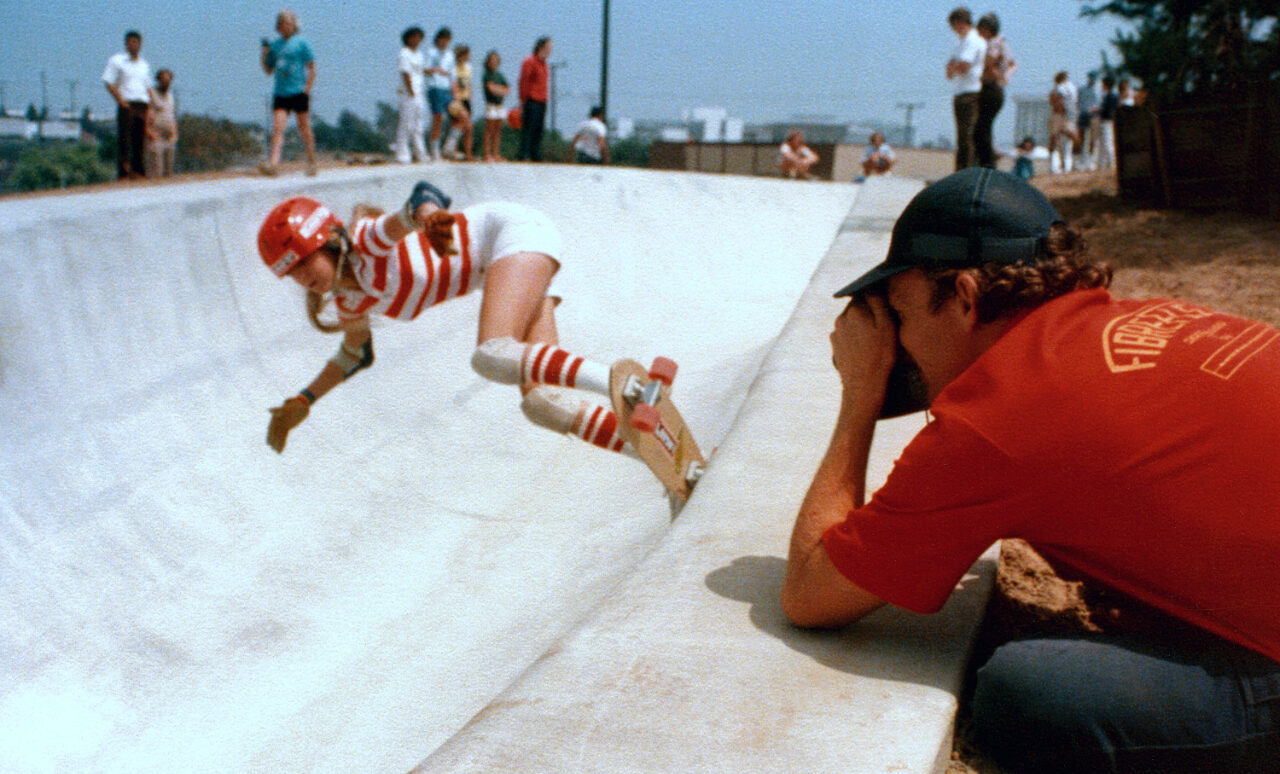Skateboard at the Design Museum

This month sees the opening of an exhibition that follows the Design Museum’s exploration of urban life, and the architecture and social ongoings that influence it. Skateboard is a unique show for the UK that explores the history of global skateboarding, incorporating both design and social elements. It has been created organically from the world of skaters and designers, facilitated by the curator Jonathan Olivares, who has an insight into both communities. The addition of the UK’s first skate ramp within an exhibition space reinforces this target audience. It is Olivares’s dual understanding that gives it such a personal feel and invites visitors to step into a world that originated from teenagers, seeing the potential in defiant pastimes.
The intimacy of the exhibition is evident for visitors immediately entering the room, with the layout depicting the development of skateboarding over seven decades. There is something about the basement location of the Design Museum that epitomises the atmosphere surrounding skating in the 1980s, fast-forwarding to when it was a more established hobby. Whilst accepted as a relative of surfing, which the exhibition cleverly entitles ‘Sidewalk surfboards’, during this decade it was generally frowned upon as a counterculture that encouraged troublesome behaviour from youths. Rewinding to the 50s, where the exhibition begins, the future was promising and young teens were initiating the history of the new sport. The exhibition does no disservice to this excitement, with an array of many of the first skateboards rife with personal engravings and charming designs.
From there, the display traces 70 years of skateboard development and societal response to the sport, acknowledging the peaks and troughs that are attached to cultural recognition. With highlights of Tony Hawke’s first pro model skateboard, some of the first polyurethane skateboards (which helped transform skateboarding from a pastime inseparable from surfing to an independent culture), and various momentous magazines from over the decades, all the bases are covered. Impressively, the seven displays manage to take visitors on a journey to see how skateboarding has become the cultural symbol that it is today. From a few Californian kids messing around with roller skate wheels and planks of wood, there is no denying the imaginative skills that are fundamental to the world of skateboarding, and the design behind it. This is why Olivares believes skateboarding to be the perfect metaphor for design, in its encouragement of interpretation and continuous development.
Today, skateboarding is a cultural phenomenon, with much of popular fashion and culture being based on skateboard attire. Baggy clothes, worn-out trainers and (broadly speaking) comfort fashion, all took influence from skateboarders. The exhibition alludes to this side of the culture by including magazine covers and adverts alike but tends to veer towards acknowledging representation with regard to the growing appreciation of skateboarding as a positive social impactor.
Most notably, in acknowledging the post-radical outlook of the 2010s, the exhibition commends skateboarding’s recent effort to diversify their community. In recent years, many NGOs have made skateboarding possible in non-Western countries, allowing the sport to reach less fortunate children who benefit immensely from the joy of skateparks and the community that comes alongside it.
From the bigger presentation of history to the attention to detail in the layout, the exhibition is an ode to the vibrant world of skateboarding. The yellow lines that guide you through the room are a reference to Spike Jonze’s own 1993 “Goldfish” skate video, one of the many inclusions of those involved in the skateboarding scene. The involvement of Converse CONS also furthers the authenticity of this exhibition and ensures viewers have a real experience of skateboarding, which they can also observe as experienced visitors skate on the indoor ramp.
Despite the smallness of the space, the show is an impressive indication of both the history of accomplishment and the future potential of skateboarding in transforming culture. Transgressing from societal inclusion to cultural influence, the skateboard is a tool for community and inspiration. The introduction of exhibitions such as these demonstrates how far the sport has come in the past 70 years, and is a promising prediction of art and culture to come, whereby an acknowledgement of how youth communities and digressive habits can be appreciated.
Violet Cannon
Image: The Design Museum
Skateboard is at the Design Museum from 20th October until 2nd June 2024. For further information visit the exhibition’s website here.
























Facebook
Twitter
Instagram
YouTube
RSS